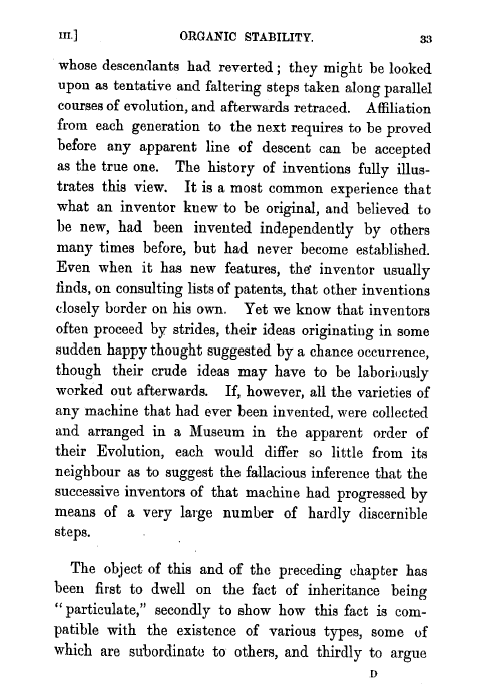in.] ORGANIC STABILITY. 33
whose descendants had reverted ; they might be looked upon as tentative and faltering steps taken along parallel courses of evolution, and afterwards retraced. Affiliation from each generation to the next requires to be proved before any apparent line of descent can be accepted as the true one. The history of inventions fully illustrates this view. It is a most common experience that what an inventor knew to be original, and believed to be new, had been invented independently by others many times before, but had never become established. Even when it has new features, the inventor usually finds, on consulting lists of patents, that other inventions closely border on his own. Yet we know that inventors often proceed by strides, their ideas originating in some sudden happy thought suggested by a chance occurrence, though their crude ideas may have to be laboriously worked out afterwards. If, however, all the varieties of any machine that had ever been invented, were collected and arranged in a Museum in the apparent order of their Evolution, each would differ so little from its neighbour as to suggest the fallacious inference that the successive inventors of that machine had progressed by means of a very large number of hardly discernible steps.
The object of this and of the preceding chapter has been first to dwell on the fact of inheritance being " particulate," secondly to show how this fact is compatible with the existence of various types, some of which are subordinate to others, and thirdly to argue
n

